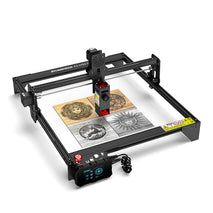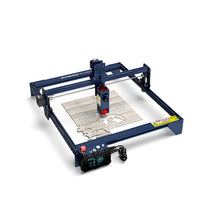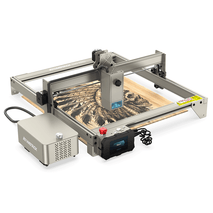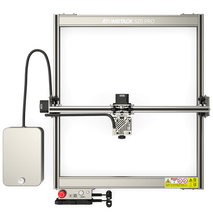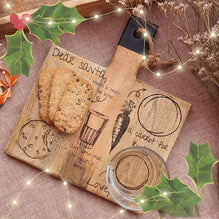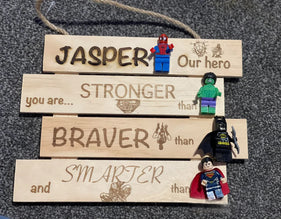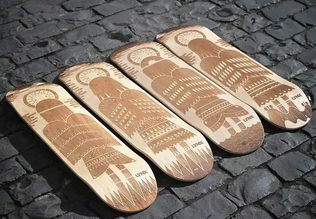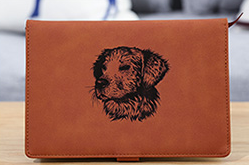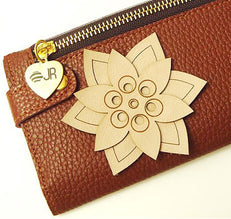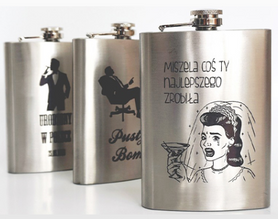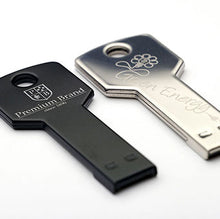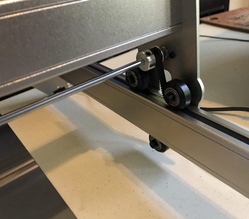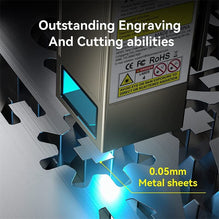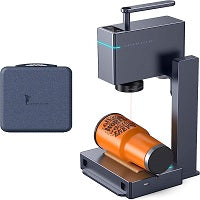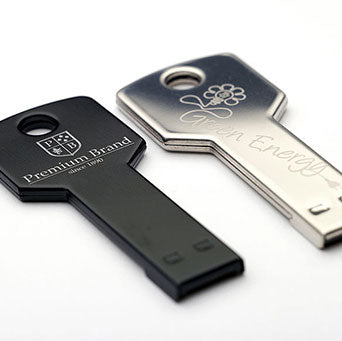
Key Factors to Consider for a Laser Engraver for Metal Selection
The method of laser engraving involves carefully controlled evaporation of materials to etch or engrave the surface of a variety of materials, including metals. The technology is growing in popularity for a range of businesses, allowing intricate patterns, logos and text to be applied to metal surfaces.
How to choose a metal laser engraving machine?
Choosing the best metal laser engraver is critical to obtaining top-notch, accurate and reliable results. The type of metal being engraved, the engraving area desired, power and wattage needs, material compatibility, precision and accuracy, as well as software, connectivity, maintenance and support, all play a role in choosing the right engraving machine.
There are many types of metals that can be engraved with a laser engraver, including but not limited to:
Stainless steel
aluminum
brass
copper
the gold
silver
titanium
considerations
When selecting a metal for laser engraving, the properties of the metal, such as reflectivity, thermal conductivity and thickness, must be considered. These factors affect engraving quality and required laser power.
1. Available laser engraving machine types
There are two main types of metal laser engraving machines:
CO2 Laser Engravers: These machines use a gas mixture as the laser source and are best suited for engraving non-metallic materials such as wood, acrylic, and glass. However, they can also be used to mark coated metal or anodized aluminum.
Fiber laser engraving machines: These machines use a solid-state laser source and are designed for metal engraving and marking. They offer better precision and speed than CO2 laser engravers.
While CO2 laser engravers are more adaptable and can engrave a wide variety of materials, they may not work as well on some metals. In contrast, fiber laser engravers offer greater precision, speed, and efficiency because they are specifically designed for metal engraving. Fiber laser engravers are often the best choice for applications involving metal engraving.
2. Power and wattage
The speed, depth and quality of a laser engraver's work are directly affected by its power and watts. Machines with more horsepower and wattage can etch thicker metal and create more intricate designs faster.
Consider the type of metal and its thickness, the desired depth of engraving, and the amount of detail required to select the proper power and wattage for your metal engraving job. For engraving thicker, harder metals, a higher powered machine such as the Twotrees TTS 55 is recommended.
3. Engraving area
Both the productivity and adaptability of a laser engraver are affected by the size of the engraved area. Jewelry and other small metal objects are suitable for smaller engraving areas, while larger engraving areas are suitable for larger items such as signage and industrial equipment. Depending on the size of the object you are etching, choose a laser engraving machine with an appropriate engraving area.
4. Material compatibility
Different types of metal require different laser engraving settings such as power, speed and frequency. Make sure the laser machine you choose can be adjusted for the best engraving results and is suitable for the specific metal you plan to use.
5. Precision and accuracy
Accuracy refers to how well an engraving design follows the original design, while precision is the repeatability of the engraving process. Due to the high precision and accuracy, the finished engravings are of high quality and meet the required standards.
The aperture of the laser source, the stability of the equipment, and the software used to regulate the engraving process are all variables that affect precision and accuracy.
When choosing a metal laser engraver, look for a machine with a high-quality laser source, stable mechanical components, and reliable software to ensure precise and accurate results. Fiber laser engravers, such as the Twotrees laser engraver, are known for their high precision and accuracy when engraving metal.
6. Software and Connections
Laser engraving software plays a vital role in creating, editing and converting designs into a format that laser engravers can understand. It also allows the user to control various engraving settings such as power, speed and frequency for optimal results.
Some popular laser engraving software options include:
Lithography
Laser GRBL
CorelDraw
Ink scene
Laser engravers can be connected to computers and other devices in a variety of ways, such as USB, Ethernet or Wi-Fi. Make sure the laser engraver you choose is compatible with your preferred connection method for seamless operation.
7. Maintenance and Support
Regular maintenance and support are essential to ensure the longevity and peak performance of your laser engraver. Proper maintenance includes cleaning the machine, checking and aligning laser optics, and replacing worn parts.
Consider the following factors related to maintenance and support:
Availability of replacement parts
Easy access to technical support
Warranty and Service Agreement
In conclusion
For metal engraving tasks, choosing the right laser engraver is critical to achieving high-quality, accurate and consistent results. When purchasing a laser engraver such as those made by TwoTrees Laser Engravers, you can do so by considering material compatibility, power, wattage, engraving area, precision, accuracy, software, connectivity, maintenance and support, and more. Choose wisely.
We recommend contacting HTPOWLASERS or a large number of laser engravers and provide knowledgeable guidance in selecting the right machine for your requirements. They offer excellent customer service and a wide selection of laser engravers, including the Twotrees TTS 55, to ensure you get your money's worth.
How to choose a metal laser engraving machine?
Choosing the best metal laser engraver is critical to obtaining top-notch, accurate and reliable results. The type of metal being engraved, the engraving area desired, power and wattage needs, material compatibility, precision and accuracy, as well as software, connectivity, maintenance and support, all play a role in choosing the right engraving machine.
There are many types of metals that can be engraved with a laser engraver, including but not limited to:
Stainless steel
aluminum
brass
copper
the gold
silver
titanium
considerations
When selecting a metal for laser engraving, the properties of the metal, such as reflectivity, thermal conductivity and thickness, must be considered. These factors affect engraving quality and required laser power.
1. Available laser engraving machine types
There are two main types of metal laser engraving machines:
CO2 Laser Engravers: These machines use a gas mixture as the laser source and are best suited for engraving non-metallic materials such as wood, acrylic, and glass. However, they can also be used to mark coated metal or anodized aluminum.
Fiber laser engraving machines: These machines use a solid-state laser source and are designed for metal engraving and marking. They offer better precision and speed than CO2 laser engravers.
While CO2 laser engravers are more adaptable and can engrave a wide variety of materials, they may not work as well on some metals. In contrast, fiber laser engravers offer greater precision, speed, and efficiency because they are specifically designed for metal engraving. Fiber laser engravers are often the best choice for applications involving metal engraving.
2. Power and wattage
The speed, depth and quality of a laser engraver's work are directly affected by its power and watts. Machines with more horsepower and wattage can etch thicker metal and create more intricate designs faster.
Consider the type of metal and its thickness, the desired depth of engraving, and the amount of detail required to select the proper power and wattage for your metal engraving job. For engraving thicker, harder metals, a higher powered machine such as the Twotrees TTS 55 is recommended.
3. Engraving area
Both the productivity and adaptability of a laser engraver are affected by the size of the engraved area. Jewelry and other small metal objects are suitable for smaller engraving areas, while larger engraving areas are suitable for larger items such as signage and industrial equipment. Depending on the size of the object you are etching, choose a laser engraving machine with an appropriate engraving area.
4. Material compatibility
Different types of metal require different laser engraving settings such as power, speed and frequency. Make sure the laser machine you choose can be adjusted for the best engraving results and is suitable for the specific metal you plan to use.
5. Precision and accuracy
Accuracy refers to how well an engraving design follows the original design, while precision is the repeatability of the engraving process. Due to the high precision and accuracy, the finished engravings are of high quality and meet the required standards.
The aperture of the laser source, the stability of the equipment, and the software used to regulate the engraving process are all variables that affect precision and accuracy.
When choosing a metal laser engraver, look for a machine with a high-quality laser source, stable mechanical components, and reliable software to ensure precise and accurate results. Fiber laser engravers, such as the Twotrees laser engraver, are known for their high precision and accuracy when engraving metal.
6. Software and Connections
Laser engraving software plays a vital role in creating, editing and converting designs into a format that laser engravers can understand. It also allows the user to control various engraving settings such as power, speed and frequency for optimal results.
Some popular laser engraving software options include:
Lithography
Laser GRBL
CorelDraw
Ink scene
Laser engravers can be connected to computers and other devices in a variety of ways, such as USB, Ethernet or Wi-Fi. Make sure the laser engraver you choose is compatible with your preferred connection method for seamless operation.
7. Maintenance and Support
Regular maintenance and support are essential to ensure the longevity and peak performance of your laser engraver. Proper maintenance includes cleaning the machine, checking and aligning laser optics, and replacing worn parts.
Consider the following factors related to maintenance and support:
Availability of replacement parts
Easy access to technical support
Warranty and Service Agreement
In conclusion
For metal engraving tasks, choosing the right laser engraver is critical to achieving high-quality, accurate and consistent results. When purchasing a laser engraver such as those made by TwoTrees Laser Engravers, you can do so by considering material compatibility, power, wattage, engraving area, precision, accuracy, software, connectivity, maintenance and support, and more. Choose wisely.
We recommend contacting HTPOWLASERS or a large number of laser engravers and provide knowledgeable guidance in selecting the right machine for your requirements. They offer excellent customer service and a wide selection of laser engravers, including the Twotrees TTS 55, to ensure you get your money's worth.
Older Post
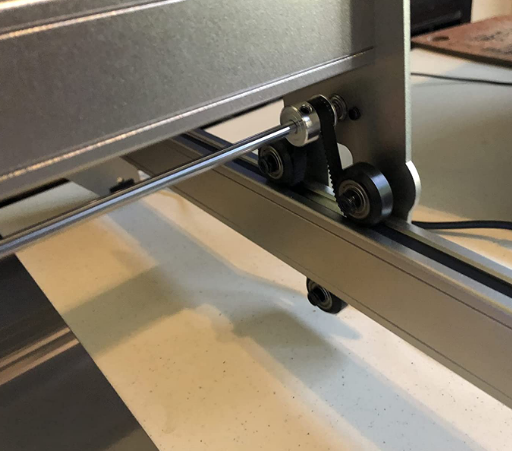 Newer Post
Newer Post

A Buyer's Guide to Choosing the Perfect Metal Laser Engraver

How to choose a metal laser engraving machine?


